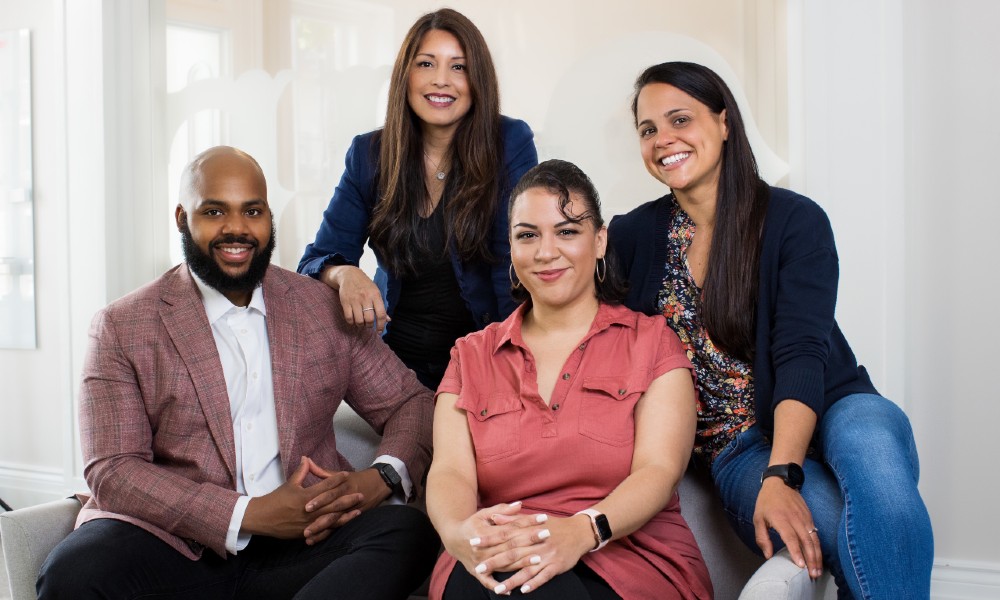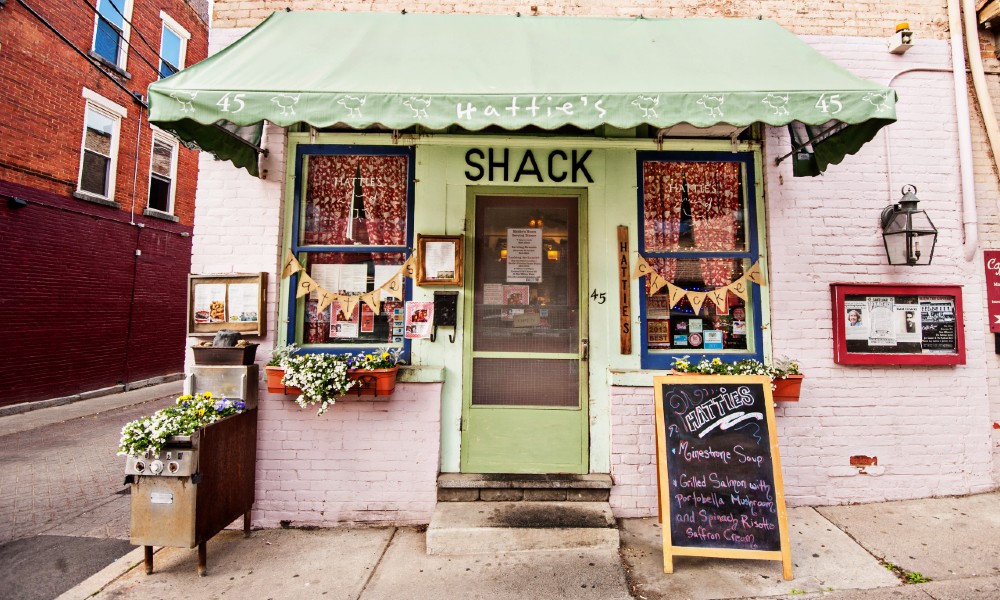When local philanthropists Ed and Lisa Mitzen first unveiled their Business for Good (BFG) foundation this past summer, it caused quite a stir in the Saratoga Springs community. It was a completely novel concept for a city that lives and breathes generosity: a foundation that would acquire successful, for-profit businesses—early acquisitions included well-known local eateries The Bread Basket Bakery and Hattie’s Restaurant—and transform them into a pipeline for charitable donations. “Lisa and I wanted to give back to those less fortunate in a huge way,” says Ed. “And while donating money to nonprofits is critically important, we also wanted to transform the philanthropic model by doing things differently.” That they did; not only do the local businesses donate profits to charity, but the BFG model also retains the businesses’ staffers, providing them with competitive salaries—and in some cases, raises—as well as free health insurance benefits. (For the uninitiated, Ed made his fortune founding three companies, including the wildly successful Fingerpaint, an advertising and marketing agency headquartered in Saratoga; while his wife, Lisa, has a background in banking and has served on the board of directors of local nonprofits like Rebuilding Together Saratoga County and Shelters of Saratoga.)
Essentially, the Mitzens were disrupting Saratoga’s tried-and-true giving model, and that led to a fair amount of confusion as to what the organization actually did, whom it served and where its charitable donations went. The initial puzzlement can be attributed to the fact that the concept is completely new to the Saratoga area, although the model has been around for decades on the national level. (Any Newman’s Own fans out there? Late Hollywood actor Paul Newman, who cofounded Double H Ranch in nearby Lake Luzerne, had been doing something similar through his brand of groceries since the early ’80s.) Like Newman, the Mitzens wanted their foundation to reach as many people as possible, not just in Saratoga, but in the greater Capital Region and beyond. To that end, BFG’s model isn’t only laser-focused on the potential profitability, in terms of charitable revenue, of their business acquisitions. The couple wanted to retain the talent that made the businesses tick, as well as create a fairer playing field across the board. In other words, the owned business’ staffing and food costs are still covered by the business’ revenues, just like they’ve always been, with the big difference being that BFG doesn’t take an owner’s draw. Once all of the owned business’ operations/food costs are covered, the rest of that money goes directly to local charities.

So what types of businesses does BFG target? Not just the ones that will serve as charitable cash cows, it turns out, per the foundation’s CEO, Jahkeen Hoke. Both the Bread Basket and Hattie’s fall under what the organization is calling “BFG Owned™ businesses,” where the businesses are owned by the foundation but operated by existing management and employees, with all future net profits going to charities. (Each business has already expanded in recent months, with the Bread Basket opening a second location in Saratoga and Hattie’s set to open a fourth location—after Downtown Saratoga, Wilton and the summer pop-up at the track—in Downtown Albany.) A second type, “BFG Accelerated™ businesses,” isn’t an outright acquired business but still gets a hefty helping hand from the foundation. For this type, “we support business owners and entrepreneurs by providing them with much-needed capital, resources, networking and other opportunities needed to grow,” says Hoke. One example is Schenectady’s Wallace Turner Law, LLP, a minority- and women-run law practice that, with BFG’s help, has been able to expand its services greatly. Adds Ed: “We wanted to help encourage minorities to reach their dreams of business ownership and entrepreneurism and support very worthwhile charities that do such tremendous good in our communities.” A third and final type, “BFG Assisted™ businesses,” is an existing charitable organization, local or national, that just requires charitable donations to keep doing what it’s doing. Last October, for example, upon recasting the Bread Basket as an owned business, BFG also presented a check for $25,000 to Troy nonprofit Capital Roots, which provides underserved communities with access to healthy foods like fresh produce. The latter would be an example of an assisted business. More recently, BFG donated $500,000 to Wellspring, an organization working to end domestic violence and sexual assault, which it used to build its new community wing. “Our areas of focus are rooted in food insecurity, housing instability and education inequity, but we give to other causes as well,” says Hoke. So far, that tally is up to more than 20 organizations. Saratoga donees include Shelters of Saratoga, Saratoga Bridges, Saratoga Center for the Family, Saratoga Senior Center and The Children’s Museum at Saratoga. Around the Capital Region, The Community Foundation for the Greater Capital Region, Feed Albany, the Wilton Food Pantry and Homes for Orphaned Pets Exist (H.O.P.E) have all received funds, too.
If BFG’s model proves successful, it could spell a massive boon not only to regional charities, but also the Capital Region community at large. To that end, the Mitzens have set a rather lofty goal of injecting local communities with a minimum of $100 million. (At press time, BFG had already disbursed $5.4 million, thanks to private funding by the Mitzens, donations made via BFG Owned™ businesses, and various fundraising programs and campaigns.) Those “donations” made through its owned businesses like The Bread Basket and Hattie’s aren’t coming from folks stopping by the restaurants and writing out big personal checks to the foundation. They’re actually made by customers frequenting the restaurants like they always have. So say you go into Hattie’s and order the biscuits, Famous Fried Chicken and a key lime pie, washing it all down with a couple Sazeracs. When you settle your check, after food and staffing costs are subtracted, the net total goes directly to charity.

On the face of it, the model looks like a win-win, and there’s no doubt the charities can use the boost. But we wanted to check in with the employees of the acquired businesses now that they’re a few months in: Is their reality as good as the sound bites? Llona Hogan, who has been with Hattie’s for 15 years and currently serves as its general manager (she was promoted after the BFG takeover), says the new ownership model has been a bona fide game-changer. Rewinding for a minute to last summer, Hogan says Hattie’s faced its fair share of challenges at the height of the pandemic. “We were fortunate that we had a lot of outdoor space,” she says. “While our seating capacity decreased by 50 percent, we still had the room to spread out and seat a reduced number of guests.” But that didn’t make it any easier on the restaurant’s staffers. “We, of course, didn’t make the same money we had made in previous summers,” Hogan says. “The crowds just weren’t there, and we had absolutely no catering events, which was a big part of our business.” When BFG took over, though, it offered the restaurant a new beginning—including making all of its full-time staffers salaried employees with benefits, eliminating the stress, for some, of having a low-paying slow night. “Honestly, this has been a restaurant professional’s dream come true,” Hogan says. “I keep telling people that this stuff doesn’t normally happen in real life, especially in the restaurant industry.” And she’s thrilled with the generous benefits that BFG provides employees. “The health insurance is huge,” she says. “Not only do we get it free of charge, but it is top-of-the-line insurance, which is a big plus for my family of four.”
But what BFG is doing goes even deeper than simply providing a living wage and health benefits to existing employees as its owned businesses. “This is where I get emotional,” says Hogan. “Before I worked at Hattie’s, I was a middle school teacher for five years. I came to Hattie’s to work part time after leaving teaching. This led to my full-time position and the realization that I loved the restaurant business and had found my home. With the acquisition of Hattie’s by BFG, I feel as though I have come full circle and am really doing something that will make a difference in our community.” So it’s not only the business that has become a vehicle for giving back, it’s each and every one of the employees who works there. “I am very proud to be a part of this endeavor, and I hope we can be an example for other businesses to follow this model,” says Hogan. “The world needs a change, and I think we are on the cutting edge of what we, as a society, can do to make things better.”
